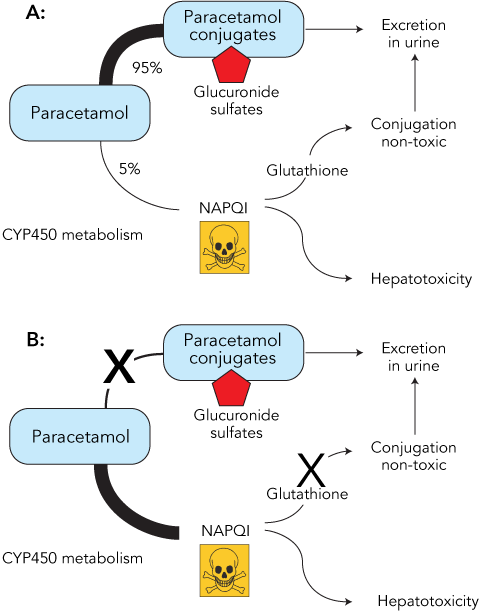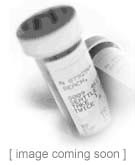
The second report, which my colleagues and I published in 1998, is a compilation of all previously published studies, cases reported to the Food and Drug Administration, and cases from the Children's Hospital Medical Center in Cincinnati. The incorrect doses given to these children occurred when teaspoonful quantities of infant drops (80 mg/0.8 mL) were given in place of liquid (160 mg/5 mL) and when regular strength tablets (325 mg) were substituted for chewable children's tablets (160 mg). (The therapeutic index is calculated by dividing toxic dose by therapeutic dose.) On the basis of this study, the estimated therapeutic index for acetaminophen is as low as 1.7. These amounts, in all cases, exceed the doses given in the labeling instructions of 10 to 15 mg/kg/dose, not to exceed five doses/day. The affected children had received from 75 to more than 750 mg/kg/day of acetaminophen, for periods of one to five days. Of the 10 children in the study whose overdoses were accidental, nine had significant hepatotoxicity and one died. The single death in the suicide group was a patient who was also receiving isoniazid, which may have enhanced the toxicity of acetaminophen.

Sixty-two of the 63 suicidal patients in the study who overdosed survived, with three of them requiring orthotopic liver transplant. One study described a 10-year experience in five California-based tertiary care centers (four of them transplant centers) with intentional and unintentional acetaminophen overdoses in children less than 19 years of age. Recent reports of hepatotoxicity in chronic alcoholics taking therapeutic doses of acetaminophen drew attention to the potential problem, 4 and two recent examinations of large numbers of children have demonstrated its scope. How big is the problem?ĭespite millions of doses of acetaminophen being administered to infants and children over the last four decades, few cases of hepatocellular necrosis caused by multiple excessive doses have been reported in the medical literature.
#ANTIDOTE FOR TYLENOL OVERDOSE MUCOMYST HOW TO#
Pediatricians can help reduce their frequency and severity if they know how these accidental overdoses come about, how to recognize and treat them, and what to tell parents about prevention. My focus here will be so-called therapeutic misadventures. 2,3 Since the introduction of this drug in the mid-1970s, mortality from intentional overdose has fallen to 0.43%, with rare deaths occurring when treatment is delayed. When administered up to 24 hours after a single toxic dose of acetaminophen, N-acetylcysteine (Mucomyst) can prevent serious toxicity. While it is true that deliberate overdoses of acetaminophen can lead to severe hepatic necrosis and hepatic failure, an effective antidote is now available. The first of these possibilities is a less serious concern than it used to be. Inadvertent overdose in which a child is given both acetaminophen for fever and a cough-and-cold preparation containing acetaminophen.Unintentional overdose in which a child is given multiple doses of acetaminophen that exceed those recommended by the manufacturer.Intentional overdose, with single doses exceeding 140 mg/kg.Despite its recognized safety in appropriate therapeutic doses, there are at least three circumstances in which acetaminophen may be toxic: Today, most children receive acetaminophen, ibuprofen, or a combination of the two for the treatment of fever.

1 Although minor adverse effects may not have been noted in this research, authorities agree that the side effects of this drug are minimal.Īcetaminophen use has increased substantially in the United States since the mid-1980s, when epidemiologic evidence incriminated aspirin in the development of Reye syndrome.

A recently published study evaluating 28,130 children exposed to acetaminophen failed to show any increased risk of acute gastrointestinal bleeding, acute renal failure, anaphylaxis, or Reye syndrome. Acetaminophen has a long history of safe use with few reported serious adverse effects from the dosages recommended by the manufacturers. Find out how these therapeutic misadventures come about and what you can do to prevent them.Īcetaminophen has been available as a nonprescription drug since 1960 and-despite some debate-remains the drug of choice for reducing fever in children. This widely used OTC drug has minimal side effects, but it's easier than parents realize to give a child too much.


 0 kommentar(er)
0 kommentar(er)
